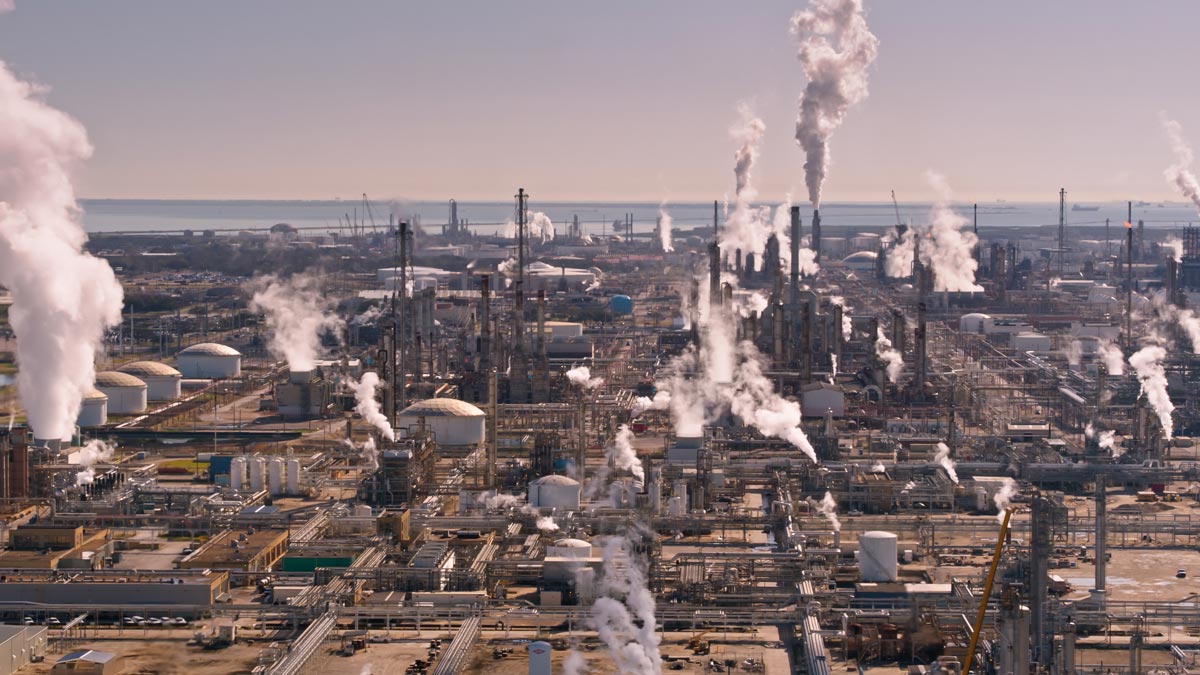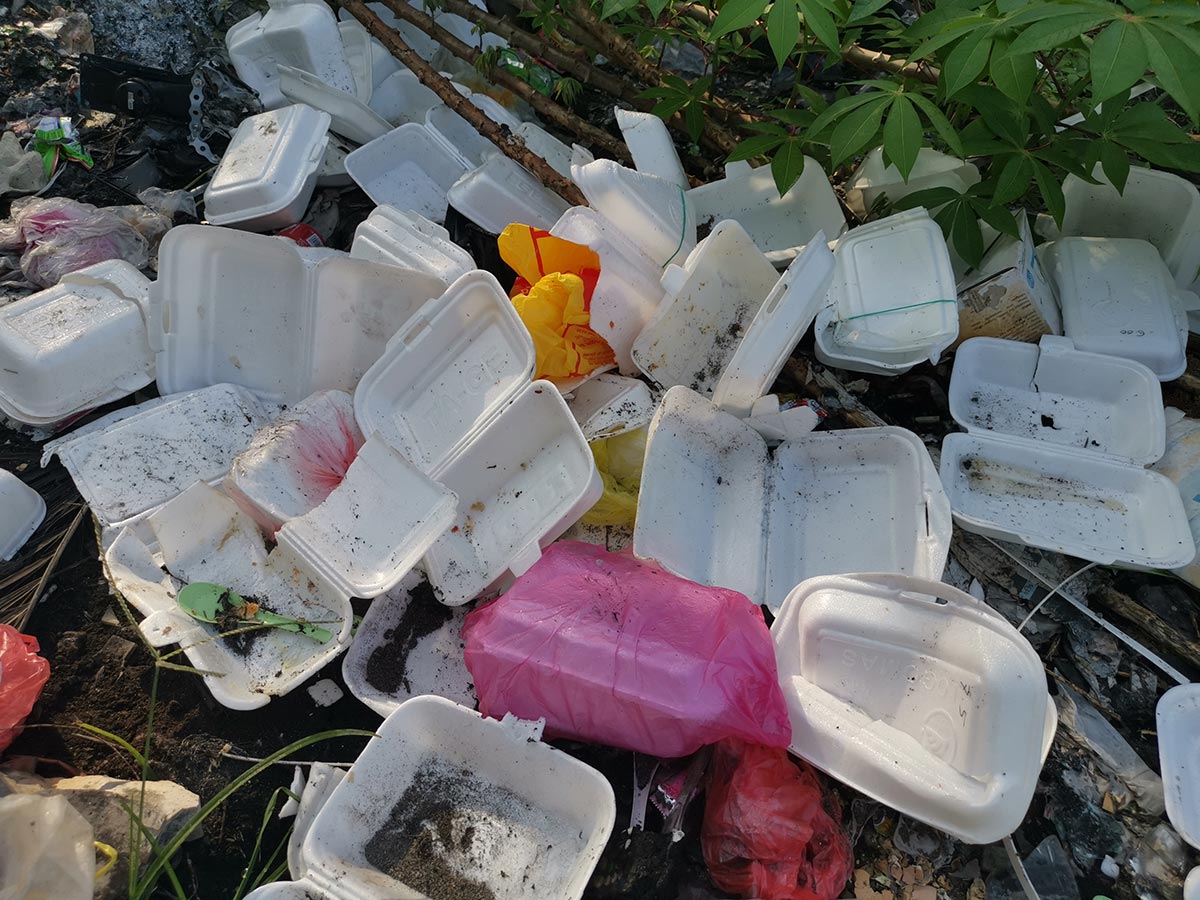
I was talking to a couple of old friends and colleagues who are up in arms about climate change but skeptical about the role of petrochemicals and plastics. One’s a scientist, the other an attorney, and both dedicated environmentalists.
Isn’t clean energy and transportation the only priority for greenhouse gas reductions, asked the scientist? Isn’t all that carbon locked up in the plastic, and then sunk when landfilled, suggested the attorney, as if maybe plastics were a good thing for the climate.
I explained that 30% to 40% of the fossil carbon used to make plastics is burned to power the high temperature production process. One-third of all greenhouse gas emissions are industrial, with chemicals approaching cement and steel as the biggest carbon-polluting manufacturing sectors. And that production of petrochemicals and plastics continues to grow exponentially, with the dubious distinction of having the fastest growing carbon footprint.
I raised a few eyebrows but now I have an even better response … and so do you.
A new report from the Lawrence Berkeley National Laboratory (LBNL) lays out the climate impacts of plastics production in the most comprehensive and authoritative assessment ever produced. You should read it yourself, but I’ve highlighted in bold-face some of their findings below:
Plastics production emitted 2.24 gigatonnes of carbon dioxide equivalents per year, or about 5.3% of direct global emissions of greenhouse gases, in 2019.
That means that plastics production emitted as much greenhouse gases as 600 coal-fired power plants five years ago! That makes the carbon footprint of plastics equal to the combined climate impacts of aviation and shipping, and land use changes and forestry.
About 12% of crude oil and 8.5% of fossil gas were used to make plastics, recently.
That’s unsustainable especially since about 95% of plastics are made from virgin fossil carbon. Only about 5% of plastics use renewable carbon with about 4% from recycled fossil carbon (mostly plastics) and 1% from bio-based plastics derived from plant matter.
By 2050, plastics production could account for 20% to 30% of the carbon budget needed to give society a fighting chance to limit global warming to less than 1.5-degrees C above pre-industrial levels, a potentially catastrophic tipping point.
Based on current growth rates, plastics production could double or triple by 2050, along with its associated greenhouse gas emissions! Petrochemicals, 80% of which are used to make plastics, could consume up to 55% of all crude oil and fossil gas demand by 2050, according to the International Energy Agency. We can’t afford such a carbon footprint!
Just three polymers emit nearly half of all plastics’ greenhouse gas emissions during their production and processing with 21% from polyethylene terephthalate (PET), 15% from polypropylene (PP), and 11% from high-density polyethylene (HDPE).
That’s not surprising. More greenhouse gases are emitted from the production of ethylene and propylene from steam cracking of fossil feedstocks than almost any other chemical in commerce (except ammonia). PET’s long chemical supply chain also includes ethylene.
Here’s a summary tally of the contribution to plastics’ greenhouse gas emissions and the major uses of each plastic whose production accounts for more than 80% of all plastics.
| Resin ID Number | Plastic | % of GHG emissions | Some Major End Uses |
|---|---|---|---|
| 1 | PET | 21 | Beverage bottles, polyester clothing, home furnishings |
| 5 | PP | 15 | Packaging, textiles, housewares, caps and closures |
| 2 | HDPE | 11 | Pipes, bottles, pails, crates, bags, packaging film |
| 3 | PVC | 10 | Pipes, film & sheet, siding, windows, doors, wiring, cable |
| 4 | LLDPE | 7 | Trash and can liners, food/other packaging, shrink wrap |
| 6 | PS | 6 | Food packaging, food service, electronic cases, foam |
| PU | 5 | Foam furniture & bedding, insulation, footwear | |
| 4 | LDPE | 4 | Packaging film, milk carton liners, can liners, diapers |
| ABS, SAN | 2 | Appliances, electronics, toys; housewares, consumer | |
| Other | 19 |
Source (of percentages): Karali N, Khanna N & Shaw N (2024). Climate Impacts of Primary Production of Plastics. Lawrence Berkeley National Laboratory. Sustainable Energy and Environmental Systems Department. April. https://escholarship.org/uc/item/12s624vf.
PET = polyethylene terephthalate, PP = polypropylene, HDPE = high-density polyethylene, PVC = polyvinyl chloride, LLDPE = linear low-density polyethylene, PS = polystyrene, PU = polyurethane, LDPE = low-density polyethylene, ABS = acrylonitrile butadiene styrene, SAN = styrene acrylonitrile copolymer.
More than 75% of the greenhouse gas emissions from plastics are emitted before the final resins are produced during the polymerization stage of production.
Here’s LNBL’s breakdown of the relative contribution of carbon pollution at each stage of plastics production from fossil resource extraction through shaping of plastic resin. (They excluded product manufacture and end-of-life fate from their assessment.) They report the percent of total greenhouse gas emissions (GHG) by stage for all plastics aggregated:
| Plastic Stage | % GHG Emissions | Process Description |
|---|---|---|
| Extraction | 20 | Extraction and/or mining of crude oil, natural gas, and coal |
| Refining / Processing | 16 | Processing or refining of fossil feedstocks into hydrocarbons, e.g., naphtha (from crude oil) or ethane (from fossil gas) |
| Other Chemicals | 13 | Production of other chemicals, e.g., acetic acid, formaldehyde and chlorine, that are non-hydrocarbons used to produce monomers |
| Monomers | 26 | Production of monomers, the chemical building blocks of polymers |
| Polymerization | 8 | The chemical combining of monomers to make the polymer resin |
| Shaping | 17 | Processing of plastic resin into the final form of materials or products |
Source: Karali N, Khanna N & Shaw N (2024). Climate Impacts of Primary Production of Plastics. Lawrence Berkeley National Laboratory. Sustainable Energy and Environmental Systems Department. April. https://escholarship.org/uc/item/12s624vf. Note that LBNL chose to place intermediate petrochemicals such as benzene and ethylene oxide in the monomer category even though they belong in a separate stage.
What’s all this add up to? When I brief my skeptical climate-activist friends on the findings of the LBNL report, these are the implications they should take away.
The fact is that plastics production is a significant and fast-growing source of greenhouse gas emissions. LBNL’s analysis shows that plastics are a larger source of carbon pollution than previously estimated by others. They dug much deeper than any prior analyst.
To slow climate change, numerical targets must be set to reduce the climate impacts of petrochemicals and plastics. Greenhouse gas reductions must be enforced.
Reducing the carbon footprint of plastics can be achieved in part by converting fossil carbon to renewable carbon, especially through bio-based plastics where the feedstock source consists of carbon recently removed from the atmosphere by photosynthesis.
However, source reduction should be an even higher priority. A renewable carbon-based materials economy that doesn’t also select for chemical safety and social justice will just perpetuate many of the harms of our current petrochemical dependence.
Some uses of plastics are unnecessary and problematic and should be eliminated outright, such as PVC and polystyrene in single-use packaging. Exponential growth in plastics production is an anathema to achieving a sustainable circular economy.
The Global Plastics Treaty under development by international negotiators offers a promising vehicle for change. The United States should join the High-Ambition Coalition to End Plastic Pollution in calling for a cap and steady reductions in plastics production followed by complementary policies to detoxify plastics and their chemical additives.
It’s now clear that taming the climate crisis requires aggressive action to reduce our dependence on petrochemical plastics. Let’s drop the skepticism and get to work!
continue reading
Related Posts
Polystyrene is the only major plastic whose production and domestic use are steadily declining. Let’s examine why.


